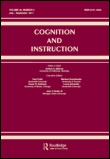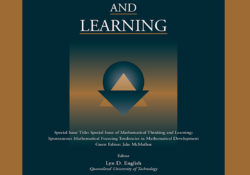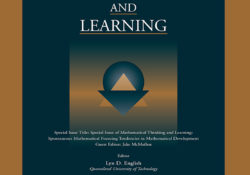tandfonline.com har udgivet en rapport under søgningen “Teacher Education Mathematics”: Abstract Abstract We examine a hypothesis implied by Steffe’s constructivist model of children’s numerical reasoning: a child’s spontaneous additive strategy may relate to a foundational form of multiplicative reasoning, termed multiplicative double counting (mDC). To this end, we mix quantitative and qualitative analyses of 31 fourth graders’ responses during clinical, task-based interviews. All participants spontaneously used one of three additive strategies—counting-on, doubling, or break-apart-make-ten (BAMT)—to correctly solve an addition word problem (8 + 7). We found between-group differences, with asymmetric association of those ordinal variables. We found counting-on to be mainly related to premultiplicative reasoning and BAMT to mDC reasoning. We discuss the theoretical significance and implications of this corroboration of Steffe’s model. Link til kilde
Like this:
Like Loading...
tandfonline.com har udgivet en rapport under søgningen “Teacher Education Mathematics”: ABSTRACT ABSTRACT Children’s own spontaneous mathematical activities are crucial for their mathematical development. Mathematical thinking and learning does not only occur in explicitly mathematical situations, such as the classroom. Those children with higher tendencies to recognize and use mathematical aspects of their everyday surroundings, both within the classroom and without, appear to have an advantage in learning formal mathematical skills and knowledge. In this introduction to the special issue, we provide an overview of the existing literature on spontaneous mathematical focusing tendencies. We then provide a brief overview of the contributions to the special issue. Link til kilde
Like this:
Like Loading...
tandfonline.com har udgivet en rapport under søgningen “Teacher Education Mathematics”: ABSTRACT ABSTRACT In this study we investigated the effects of two naturalistic 2- to 4-year-old children’s intervention programs aimed at promoting children’s Spontaneous Focusing On Numerosity (SFON) and early numerical skills. The study consisted of a quasi-experimental, pretest-posttest design with a delayed posttest and an active control group participating in the Let’s Read and Talk program. All conditions had 6 weeks of intensive training followed by a 4-month rehearsal phase, when intervention activities were integrated into normal day care. The results of both numerical interventions in the whole group level show positive, small- to medium-sized long-term effects on cardinality-related skills from pretest to delayed posttest. The SFON tendency increased more from pretest to posttest in both studies but the group differences… Continue Reading →
Like this:
Like Loading...


